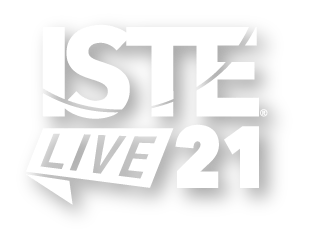

Messy Making: Makerspace Centers for Early Childhood Design Learning |
Explore and create : Playground
This is presentation 3 of 3, at station "Early Learning Network Playground Station 3" within the playground "It’s Center Time with the Early Learning Network!"; scroll down to see more details.
Other presentations in this group:
| Audience: | Teachers |
| Skill level: | Beginner |
| Attendee devices: | Devices not needed |
| Participant accounts, software and other materials: | Although not required, participants may wish to bring small recyclable or found materials to play with during the session. |
| Topic: | Maker activities & programs |
| Grade level: | PK-2 |
| Subject area: | STEM/STEAM |
| ISTE Standards: | For Students: Innovative Designer
|
This session will introduce evidence-based ways that educators and caregivers can create makerspace-inspired learning spaces and activities for children ages 3-8 years. All recommendations and activities come from research conducted at the DevTech Research Group at Tufts University, or from faculty and student-created work at Tufts' Early Childhood Technology Graduate Certificate Program. Bers' (2020) Computational Thinking powerful ideas, particularly the idea of Engineering Design, will inform activity and teaching recommendations, and space design recommendations will come from research conducted by the presenter in collaboration with the LEGO Foundation and Tufts University to explore principles and design guidelines for early childhood makerspaces. The session will include a mix of low- and no-tech materials suggestions to provide an inclusive, low barrier-to-entry for settings with diverse technology access, and suggestions will be presented to engage children in open-ended, learner-directed design-based play.
This brief 20-minute session will open with a summary of some design recommendations and activitiy starters for DIY early childhood makerspaces, specifically maker-corners and classroom maker centers, to provide affordances that engage children in open-ended and playful making. Specifically, the timeline will be as follows:
0-5 mins: Introduce topic, share evidence-based recommendations for makerspace centers
5-10 min: Share example activity starters using videos and images
10-15 min: Hands-on play with a Messy Making activity
15-20 min: Q&A, discussion with audience.
Bers, M. U. (2020). Coding as a playground: Programming and computational thinking in the early childhood classroom. Routledge.
Strawhacker, A. and Bers, M. U. (2018). Promoting Positive Technological Development in a Kindergarten Makerspace: A Qualitative Case Study. European Journal of STEM Education, 3(3) 09. doi:10.20897/ejsteme/3869
Strawhacker, A. & Bers, M. U. (2018). Makerspaces for Early Childhood Education (Principles of Space Redesign) & Maker values of early childhood educators, organizing a grassroots space. In Gravel, B. E., Bers, M. U., Rogers, C., & Danahy, E. (Eds.), Making Engineering Playful in Schools (pp. 18-29). The LEGO Foundation.

Makey Music
Mixing Sports and STEAM With the Active Roulette
Real Heroes Do Not Wear Capes